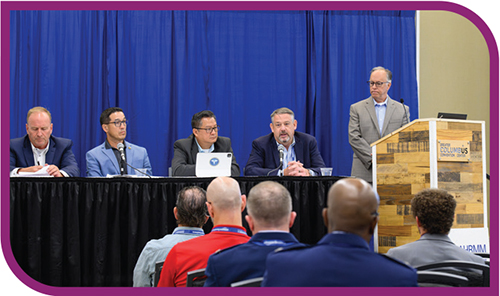Proposed tax credit aims to bolster nurse preceptor ranks

Editor's Note Bipartisan legislation seeks to combat nursing shortages by financially incentivizing experienced nurses to train the next generation of healthcare professionals, Becker’s Clinical Leadership reported January 31. The Precept Nurses Act, introduced by Rep. Jen Kiggans, would offer a $2,000 tax credit to nurses who become preceptors in health…
FDA announces multiple Class 1 recalls

Editor's Note The US Food and Drug Administration (FDA) designated Class 1 Recalls—the most severe category indicating serious risk of injury or death—for multiple devices over the past few days, including pressure monitoring systems, emergency resuscitators, fluid delivery sets, extracorporeal blood circuits, endoscope accessories, infusion pumps, and glucose/Ketone meters. These…
OR Manager Award winners share leadership lessons

Certain perioperative leaders stand out for their ability to inspire teams, drive innovation, and maintain excellence in patient care. Amid continued staffing shortages, technological change, and evolving patient needs, the recipients of the 2024 OR Manager Awards exemplify all these qualities and more. Nominated by their peers and recognized in…
Healing healthcare: How clinician incentives can help get from volume to value

Takeaways • Although the central tenets of value-based healthcare have not changed, in many cases implementation has been reduced to little more than reducing costs, to the detriment of clinicians and patients. • The right incentives, such as recognition and work support, can effectively inspire clinicians to deliver high value…
Solving the supply chain equation takes shared perspective, ingenuity

Takeaways • Interdepartmental collaboration and standardized communication are essential to quickly identifying and addressing supply chain challenges. • Just-in-time inventory strategies have gained traction since the pandemic. Successful strategies involve leveraging data, rethinking preference card management, and shifting to a demand-planning model. • Resiliency is essential to cope with the…
Three strategies for demystifying the ASC supply chain puzzle

Ensuring safe, quality care requires precise alignment among inventory levels, delivery schedules, storage solutions, and every other element of the supply chain. A single missing piece of this puzzle—say, a delayed shipment or a storage issue—can disrupt the entire picture. Making the pieces fit can be difficult for any healthcare…
E-learning builds surgical tech talent pool for small, rural hospitals

CEO Karen Franco, MBA, spent years struggling to fill surgical technologist (ST) positions at Pacific Surgery Center in Poulsbo, Washington, due to a lack of viable training options. Nearly 1,400 miles away, Deb Braly, RN, a nurse educator in the surgery department of San Luis Valley Regional Medical Center in…
Videos digitize, automate preoperative, postoperative care

Immersed in texts, apps, QR codes, and streaming videos, we live in a digital world. And yet, healthcare has been slow to catch up. Most nurses and other staff still hand out packets of paper and relay information verbally, whether in person or over the phone. It does not have…
Study: ERAS protocol reduces opioid use after cardiac surgery

Editor's Note Implementing a multimodal analgesia-based enhanced recovery after surgery (ERAS) protocol significantly reduced both intraoperative opioid administration and postoperative opioid prescriptions in cardiac surgery patients, according to a January 5 report in Anesthesiology News. The findings were presented at the 2024 International Anesthesia Research Society meeting by Montefiore-Einstein Center…
Study: Prehabilitation reduces surgical complications, speeds recovery

Editor's Note Patients who engage in prehabilitation—exercise, diet changes, and social support—before surgery significantly reduce their risk of complications, shorten hospital stays, and improve recovery, according to a new evidence review in The BMJ. As reported January 24 by HealthDay, the analysis of 186 clinical trials involving more than 15,500…

 Free Daily News
Free Daily News